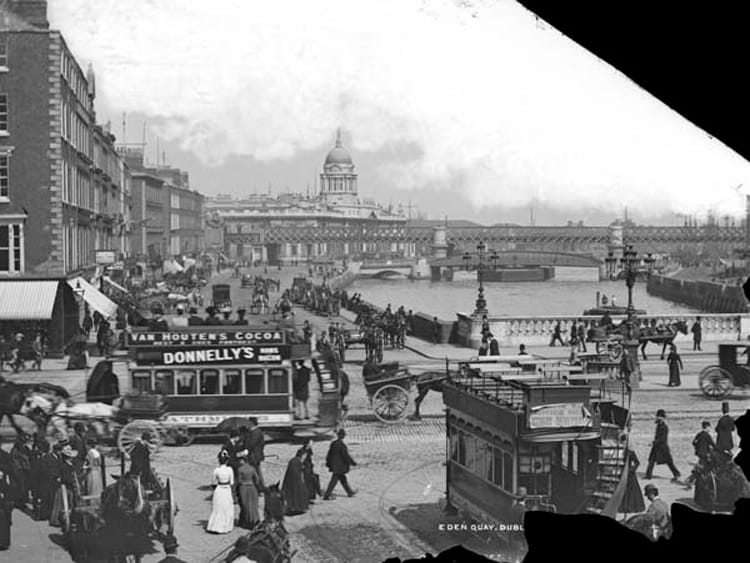Vanished emerald city: the Dublin of James Joyce’s “Ulysses.”
What was Dublin really like in the era of James Joyce's iconic novel?

June 16, 1904, which was 120 years ago today, is arguably one of the most famous dates in Irish history, although nothing of any note actually happened in Ireland on that day. It’s famous because that’s the day on which James Joyce’s novel Ulysses, originally published in 1922, takes place. Continually ranked as one of the greatest novels of the English language – if not the greatest – Ulysses certainly represents a pinnacle in Irish cultural history. It’s also a remarkable snapshot, frozen in time, of the city of Dublin as it existed at the dawn of the 20th century.
Ulysses, as many people know, takes place all in one day, and it doesn’t have much of a plot. It begins in a Martello tower – a cylindrical defensive tower commonly built throughout the British Empire in Napoleonic times – with a conversation between Stephen Dedalus and Buck Mulligan, and then the focus shifts to Leo Bloom who spends most of that day (June 16, 1904) wandering around Dublin. He walks on a beach called Sandymount Strand, has a glass of wine and a gorgonzola cheese sandwich at Davy Byrne’s Pub, and visits Glasnevin Cemetery. The book happens almost exclusively in Leo Bloom’s head, excepting the opening scenes and the famous soliloquy by his long-suffering wife, Molly Bloom. Ulysses mimics, in structure and basic cast of events, Homer’s classic text The Odyssey.


